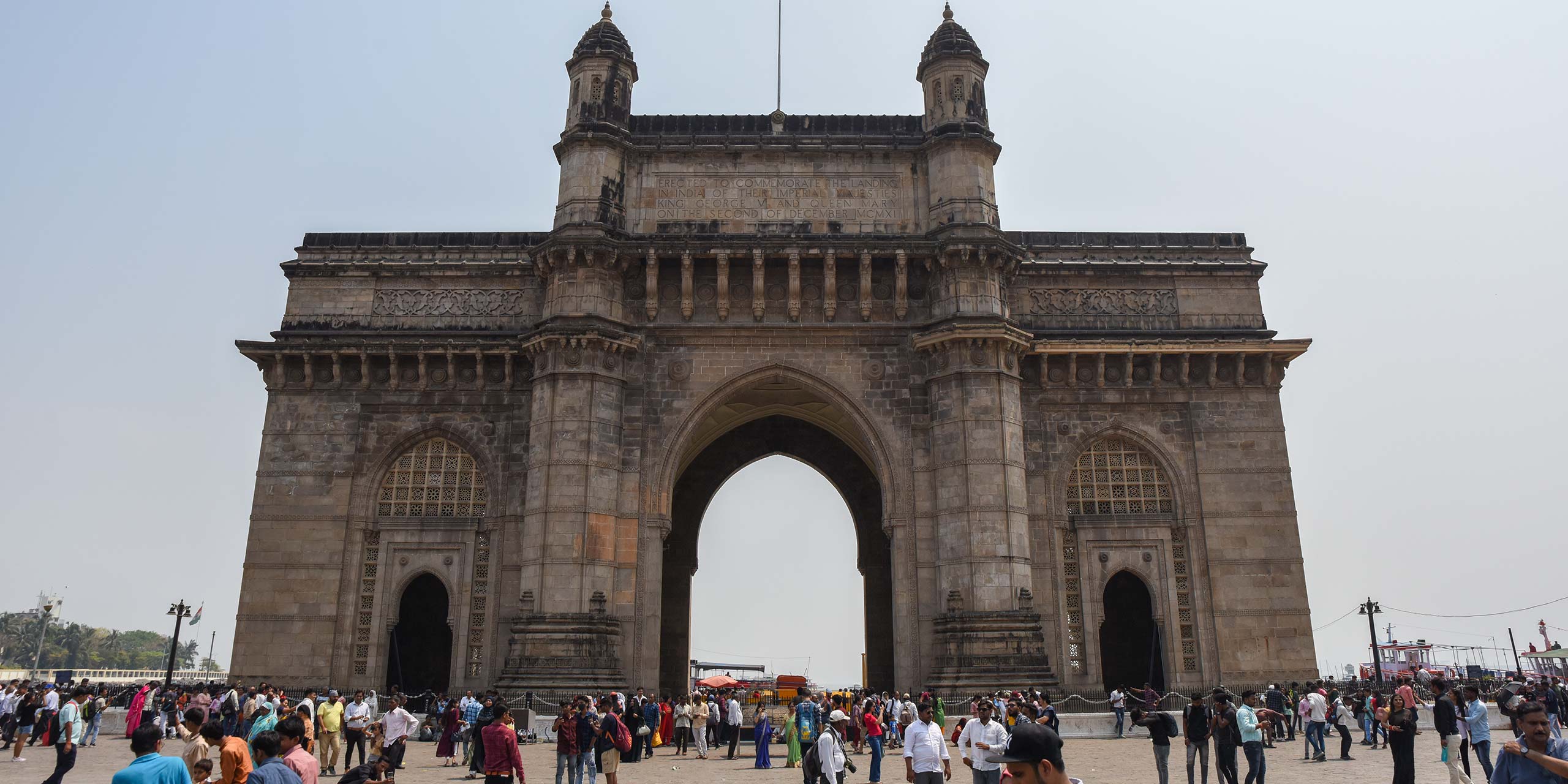
I am about to ascend a hill in search of a place so unique it sounds almost mythical.
When a car arrives at my hotel in downtown Mumbai, the driver peers at me in his rearview mirror with a crease in his brow. Then he asks to double check my destination: the Tower of Silence.
“It’s private, they don’t normally let people in,” the driver warns me. But I’m far too intrigued not to try. This location has been on my mind since I came across it two months ago while researching ideas for this trip. The stories I’ve read and photos I’ve seen are so curious that this has become my most anticipated port of call in Mumbai.
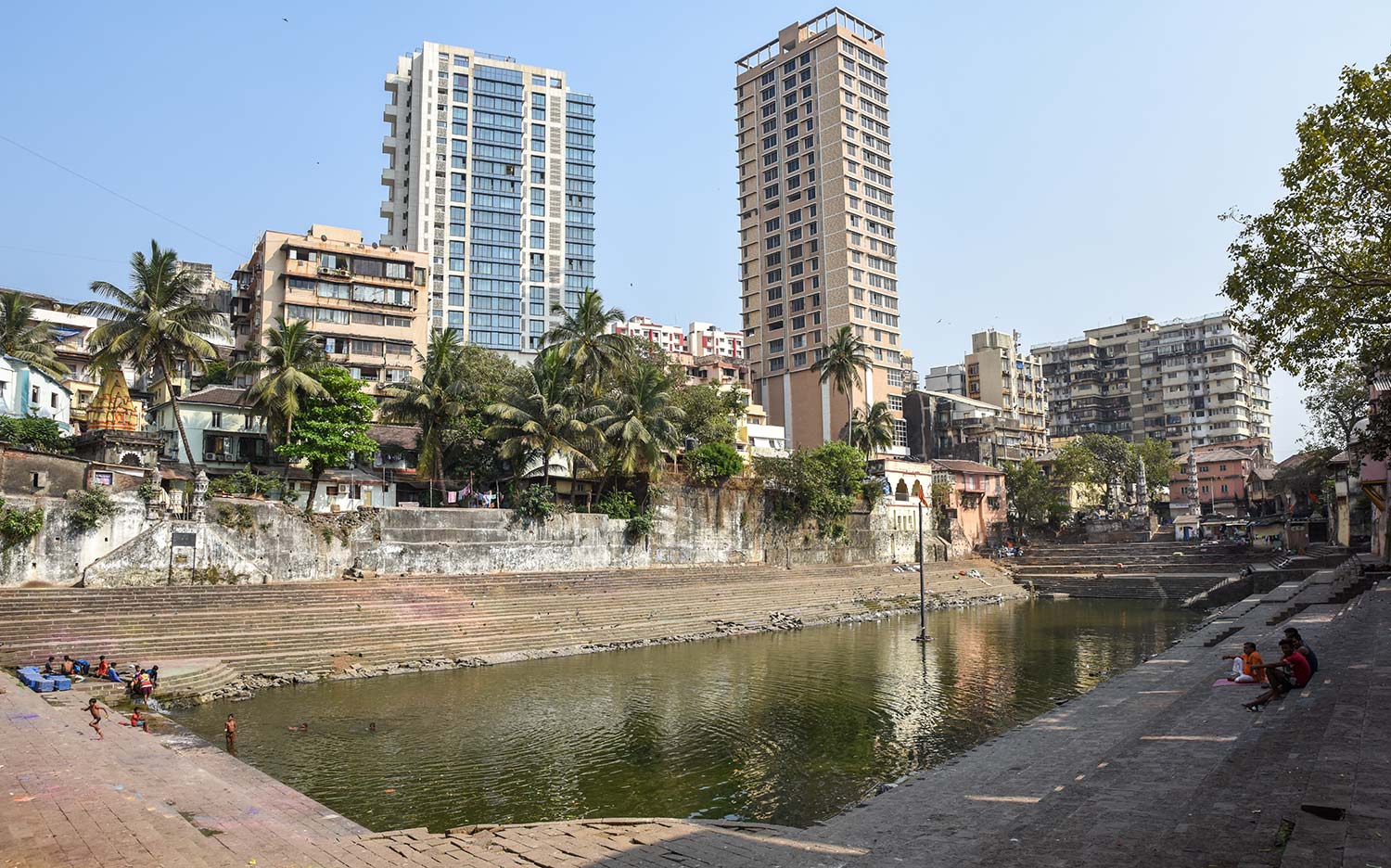
After piercing a busy intersection, fringed by a Starbucks, I spot the boundary of the place we’re seeking. The car drives beneath an overpass, joins August Kranti Road and then turns left through an arched gateway that says: Doongerwadi. Mumbai’s ceaseless clammer and clatter swiftly dissolve.
Doongerwadi is described as the “only green lung of South and Central Mumbai” by the Centre for Environmental Research and Education India. Meaning “orchard on the hill”, Doongerwadi is 55 acres of dense vegetation. I was shocked this huge parcel of land had survived, undeveloped, in the middle of a gargantuan, hyper-crowded city home to up to 25 million people. That’s almost the same population as my home country Australia, a nation which covers twice as much land area as all of India.
The reason Doongerwadi has remain untouched sits at its crest. Up there, for many centuries, Mumbai’s vultures were fed by the Tower of Silence. A lifeless, naked body would be left on an altar inside this huge, open-air stone structure. Nearby, a supposedly eternal flame flickered. Then, the circling vultures swooped into the Tower of Silence and purified this corpse by devouring it.
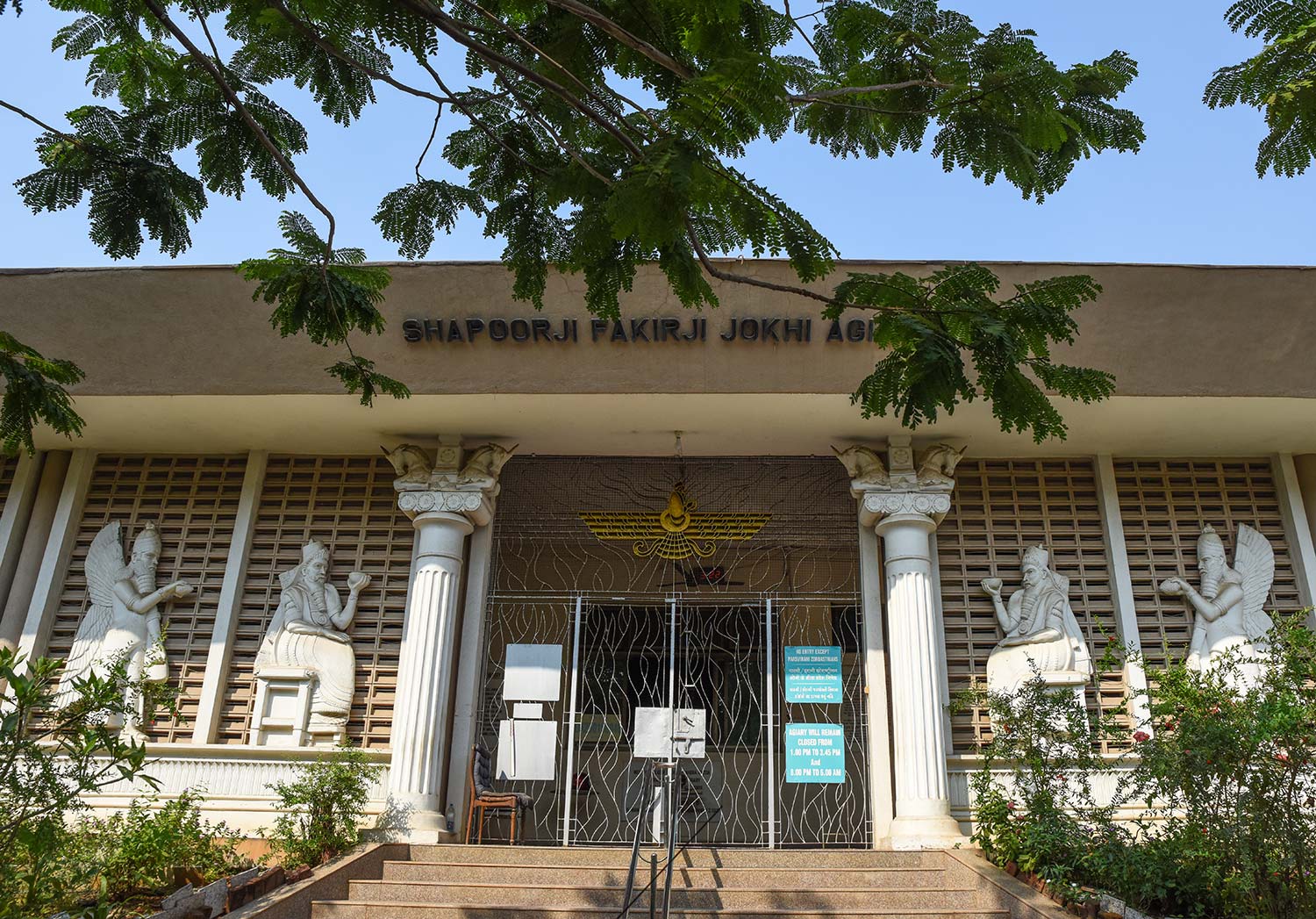
This ritual, which is either macabre or beautiful depending on your perspective, was performed here hundreds of times from the 1600s onwards. Yet very few people ever witnessed it. Despite the Tower of Silence being located in Malabar Hill, a wealthy area lined by multi-million-dollar condominiums with views across Doongerwadi.
That’s because, as I found out, this mysterious, tree-flanked structure is off limits to outsiders. The Tower of Silence cannot be accessed by anyone who isn’t Parsi. They are the Indian members of the 3,500-year-old religion of Zoroastrianism, inspired by Iranian prophet Zoroaster.
This is perhaps the world’s oldest monotheistic faith. It was once a chief religion of Iran, from where Mumbai’s Parsi community originated, having fled persecution. From a worldwide population of about 114,00 in 1941, there’s only about 50,000 Parsis left, according to a 2021 report by the New York Times.
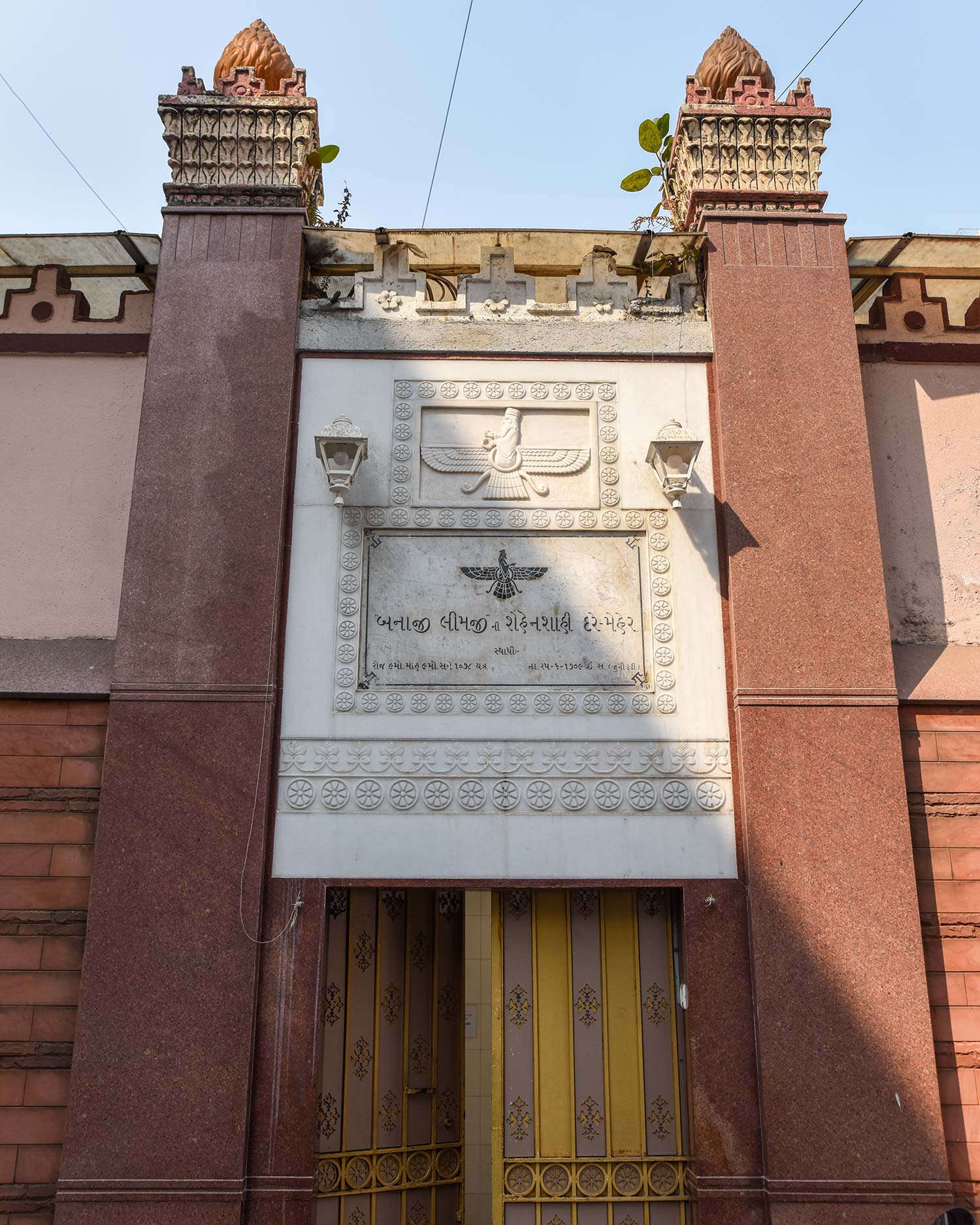
After I left the car, a security guard stopped me from walking the narrow path up to the Tower of Silence, which from looking at online images I know is a circular, roofless, stone building that looks like a giant sink hole. I spied no vultures in the sky.
A friendly Parsi woman, who I met at Doongerwadi, explained that in recent years these birds had all but died out in Mumbai. Their absence meant the Parsi sky burials performed at the Tower of Silence had been replaced by cremations.
Chiefly to blame for the vulture decline is Diclofenac, an anti-inflammatory drug which was used to treat cattle in India and which proved lethal for vultures. This shocked me. Because for years I’ve used Diclofenac, commonly sold as Voltaren, to ease the pain and swelling I’ve suffered from continuing to play competitive sport through my 30s and into my 40s. As I popped these pills, never did I consider my link with the health of Mumbai’s vultures.
This city is home to the world’s largest remaining Parsi community. Mumbai not only has the Tower of Silence, which is flanked by a large Parsi residential colony, but also dozens of Parsi fire temples. These, too, don’t allow non-Parsi visitors.
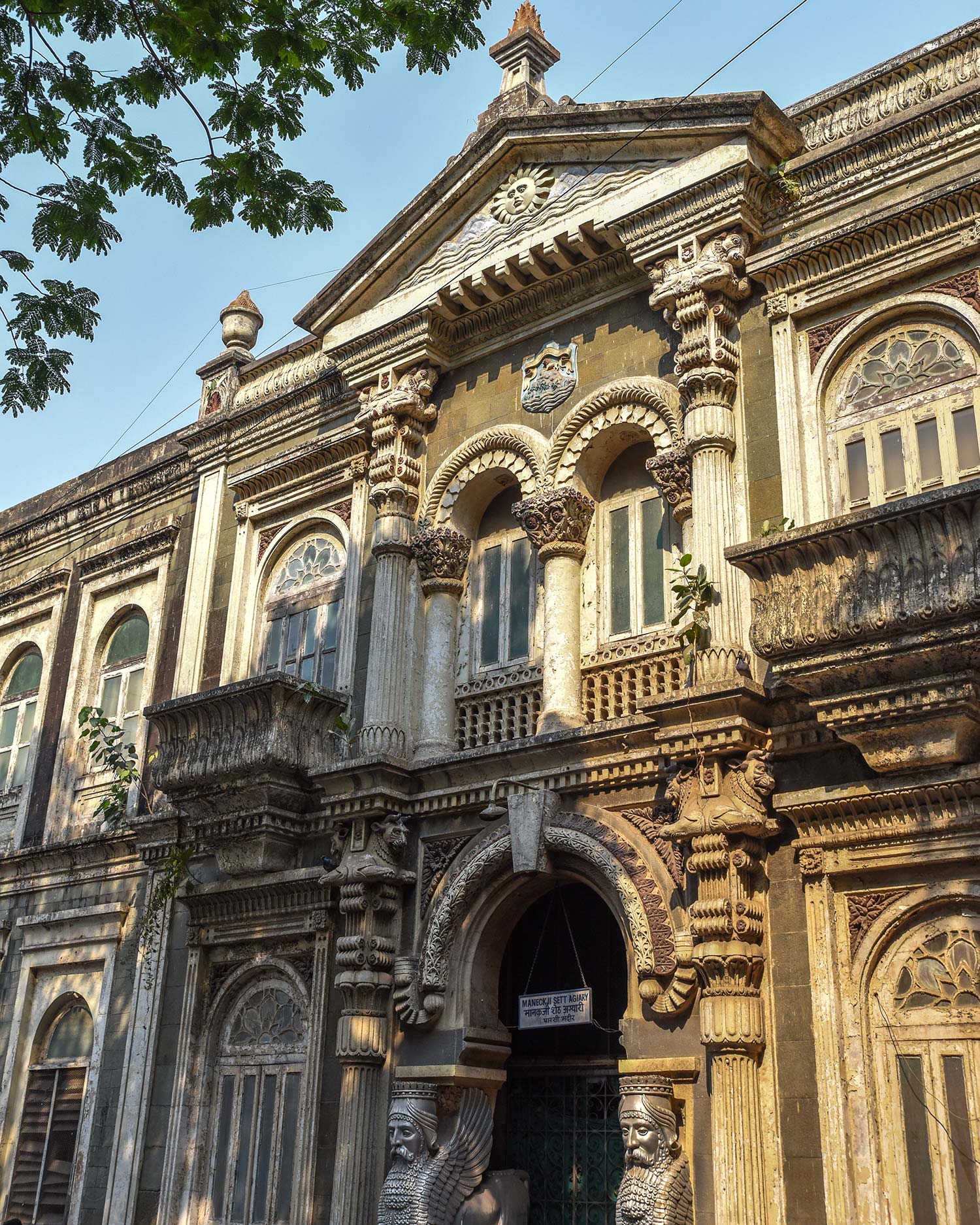
But whereas I couldn’t even glimpse the Tower of Silence, I was able to admire the facades of several fire temples. One of those, Shapoorji Fakirji Jokhi Agiyari, was located alongside Malabar Hill’s Parsi colony. A relatively modern, understated building, this temple was decorated by a symbol known as the Faravahar.
This image of a bearded man encircled by a large set of wings is one of the chief icons of Zoroastrianism, along with fire, which in this faith symbolizes purification. The following day I photographed several more fire temples. Called Banaji Agiyari, Maneckji Seth Agiary, and Langana Godiwalla Agiary, they dated back up to 300 years.
Rather than concealed amid forest on a hill, these Parsi temples are in the heart of Mumbai’s main tourist district, Fort, home to key attractions like the Gateway of India, St Andrew’s Cathedral, and the National Gallery of Modern Art. This highlights the degree to which the Parsi community remains woven through Mumbai. Their sky burials may have ceased, and their population may be dwindling, but the legacy of this unique and fascinating people lives on.
